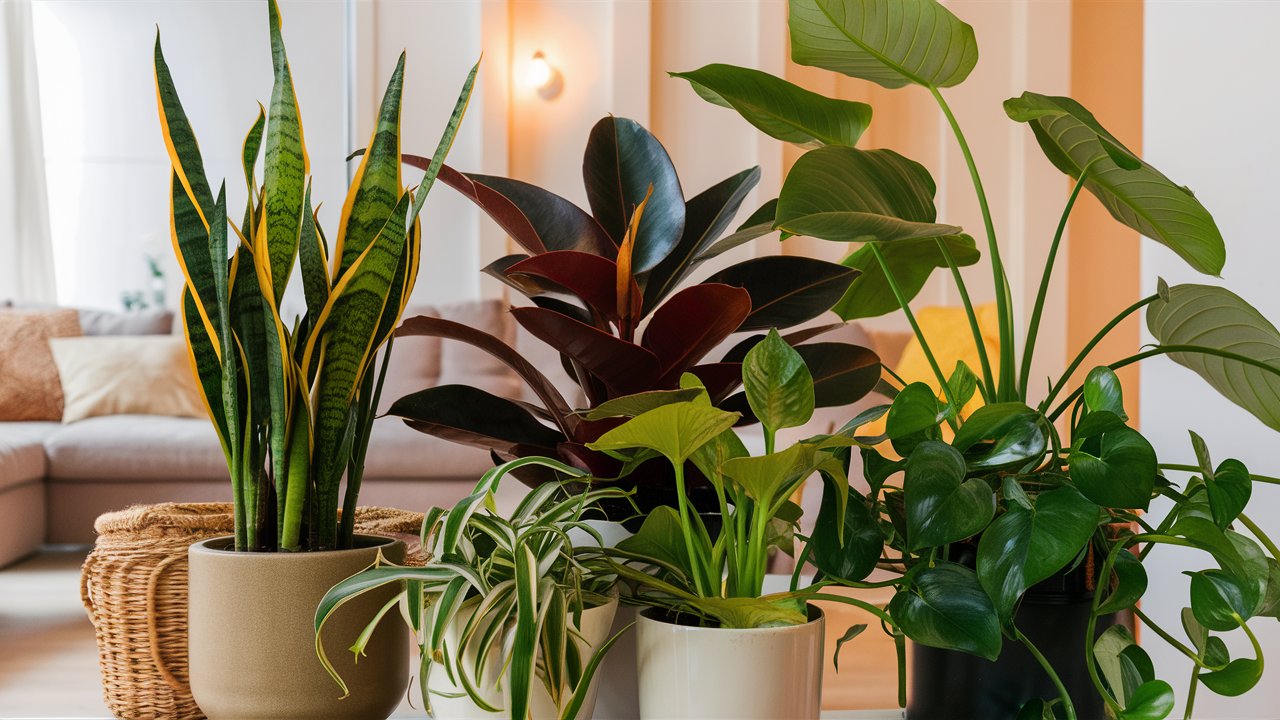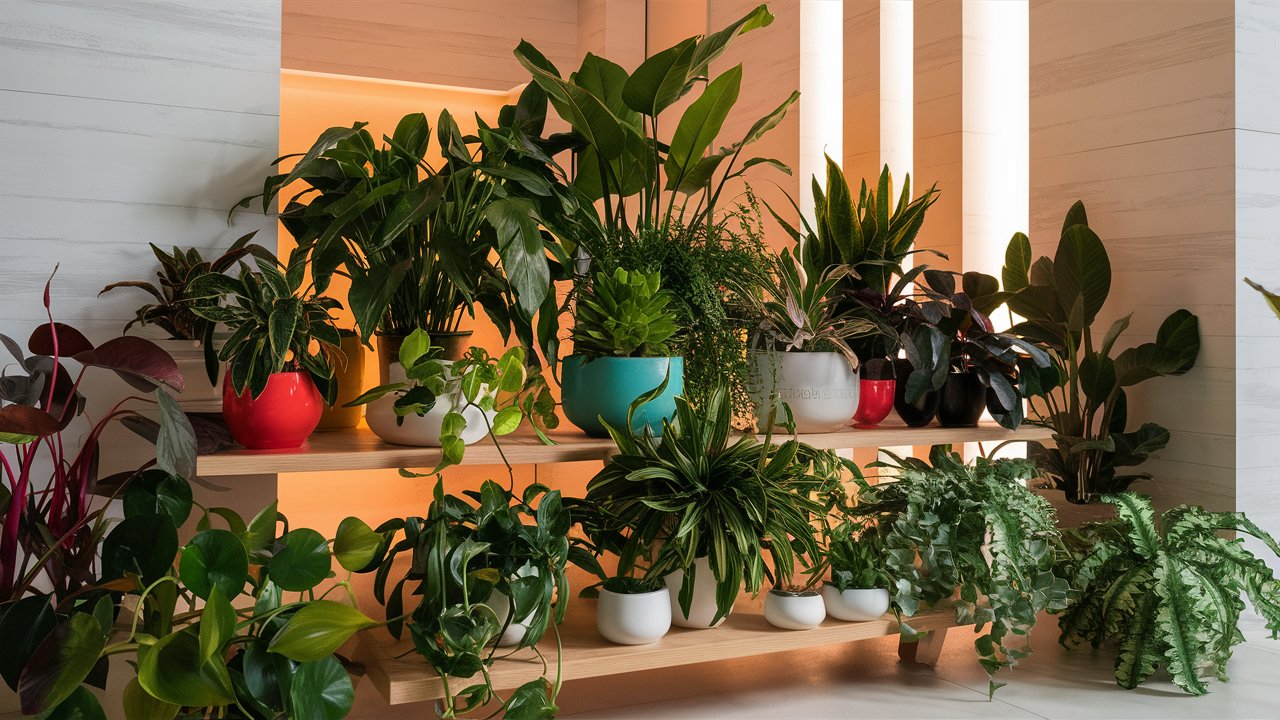In 2024, creating a pet-friendly environment while enhancing your home’s aesthetic appeal has never been easier. Houseplants not only beautify your living space but also improve air quality and create a calming atmosphere. However, for pet owners, it is crucial to choose houseplants that are safe for their furry companions. In this comprehensive guide, we explore the top pet-safe houseplants that will brighten your home in 2024, ensuring a safe and vibrant environment for both your pets and your family.
Why Choose Pet-Safe Houseplants?
When selecting houseplants, safety should be a priority, especially if you have pets. Certain plants contain toxic substances that can harm pets if ingested. By opting for pet-safe houseplants, you can enjoy the benefits of greenery without worrying about potential health risks to your beloved animals.
Top Pet-Safe Houseplants for 2024
1. Spider Plant (Chlorophytum comosum)
The Spider Plant is a popular choice for pet owners due to its non-toxic nature and ease of care. Its arching leaves and occasional white flowers add a touch of elegance to any room. Spider Plants thrive in indirect sunlight and can tolerate a variety of conditions, making them perfect for busy households.
2. Boston Fern (Nephrolepis exaltata)
Boston Ferns are known for their lush, feathery fronds that can add a tropical feel to your home. These ferns are safe for pets and thrive in high humidity and indirect light. Regular misting and watering will keep your Boston Fern looking its best, and your pets will be safe if they decide to take a nibble.
3. Areca Palm (Dypsis lutescens)
The Areca Palm is a stunning addition to any indoor space. Its graceful, feathery fronds are non-toxic to pets, making it an ideal choice for homes with cats and dogs. Areca Palms prefer bright, indirect light and require regular watering to maintain their lush appearance.

4. Calathea (Calathea spp.)
Calatheas are known for their striking, patterned leaves that can brighten any room. These plants are pet-safe and thrive in low to medium light conditions. Calatheas require consistent moisture and high humidity, so they are perfect for bathrooms or kitchens.
5. Parlor Palm (Chamaedorea elegans)
The Parlor Palm is a classic houseplant that is both elegant and pet-friendly. With its delicate, arching fronds, it adds a touch of sophistication to any space. Parlor Palms prefer low to moderate light and regular watering, making them easy to care for and safe for your pets.
6. Ponytail Palm (Beaucarnea recurvata)
Despite its name, the Ponytail Palm is not a true palm but a succulent. It is non-toxic to pets and has a unique, bulbous trunk with long, cascading leaves. Ponytail Palms prefer bright light and infrequent watering, making them a low-maintenance option for pet owners.
7. African Violet (Saintpaulia)
African Violets are beloved for their vibrant, velvety flowers that come in a variety of colors. These small, pet-safe plants thrive in bright, indirect light and require consistent moisture. African Violets are perfect for adding a pop of color to your home while ensuring the safety of your pets.
8. Friendship Plant (Pilea involucrata)
The Friendship Plant is known for its textured, quilted leaves and ease of care. It is safe for pets and thrives in moderate to bright indirect light. Friendship Plants prefer consistent moisture, making them a great choice for busy households.
9. Baby Rubber Plant (Peperomia obtusifolia)
Baby Rubber Plants are compact, pet-safe plants with thick, glossy leaves. They thrive in low to bright indirect light and require moderate watering. Their low-maintenance nature and non-toxic properties make them ideal for pet-friendly homes.
10. Prayer Plant (Maranta leuconeura)
The Prayer Plant gets its name from the way its leaves fold up at night, resembling hands in prayer. These plants are safe for pets and thrive in low to bright indirect light. Prayer Plants require high humidity and regular watering to stay healthy and vibrant.
Tips for Keeping Your Pet-Safe Houseplants Healthy
Proper Lighting
Ensure that your houseplants receive the appropriate amount of light. While some plants thrive in bright, indirect light, others may prefer low light conditions. Place your plants in suitable locations to promote healthy growth.
Consistent Watering
Each plant has specific watering needs. Overwatering or underwatering can harm your plants, so it’s essential to understand the requirements of each type. Generally, allowing the soil to dry out slightly between waterings helps prevent root rot.
Humidity Levels
Many pet-safe houseplants, such as ferns and Calatheas, thrive in high humidity environments. You can increase humidity by placing a humidifier nearby, misting the plants regularly, or using a pebble tray filled with water.
Regular Cleaning
Dust can accumulate on the leaves of houseplants, hindering their ability to photosynthesize. Wipe the leaves gently with a damp cloth to keep them clean and allow them to breathe.
Pest Control
Inspect your plants regularly for signs of pests, such as aphids or spider mites. If you notice any infestations, treat them promptly with natural remedies or insecticidal soap to protect your plants and pets.
Creating a Pet-Friendly Plant Space
Designating specific areas for your houseplants can help keep them out of reach of curious pets. Consider placing plants on high shelves, using hanging planters, or creating a dedicated plant corner with barriers to ensure your pets stay safe.
Conclusion
Incorporating pet-safe houseplants into your home in 2024 not only enhances your living space but also ensures a safe environment for your pets. With a variety of beautiful, non-toxic options available, you can create a vibrant and pet-friendly oasis. From the elegant Spider Plant to the colorful African Violet, there is a perfect houseplant for every pet-loving household. Enjoy the benefits of greenery while keeping your furry friends safe and happy.







